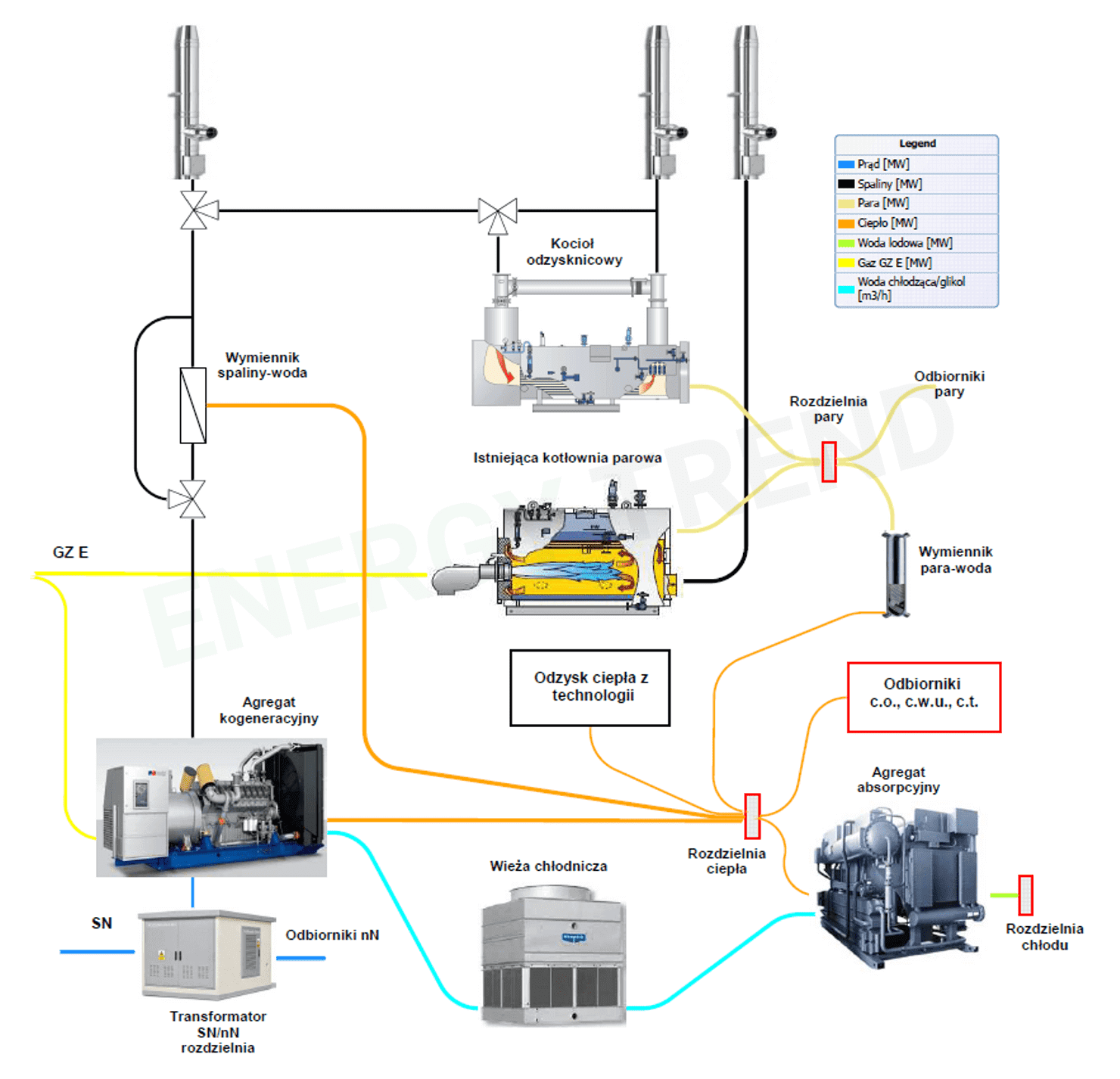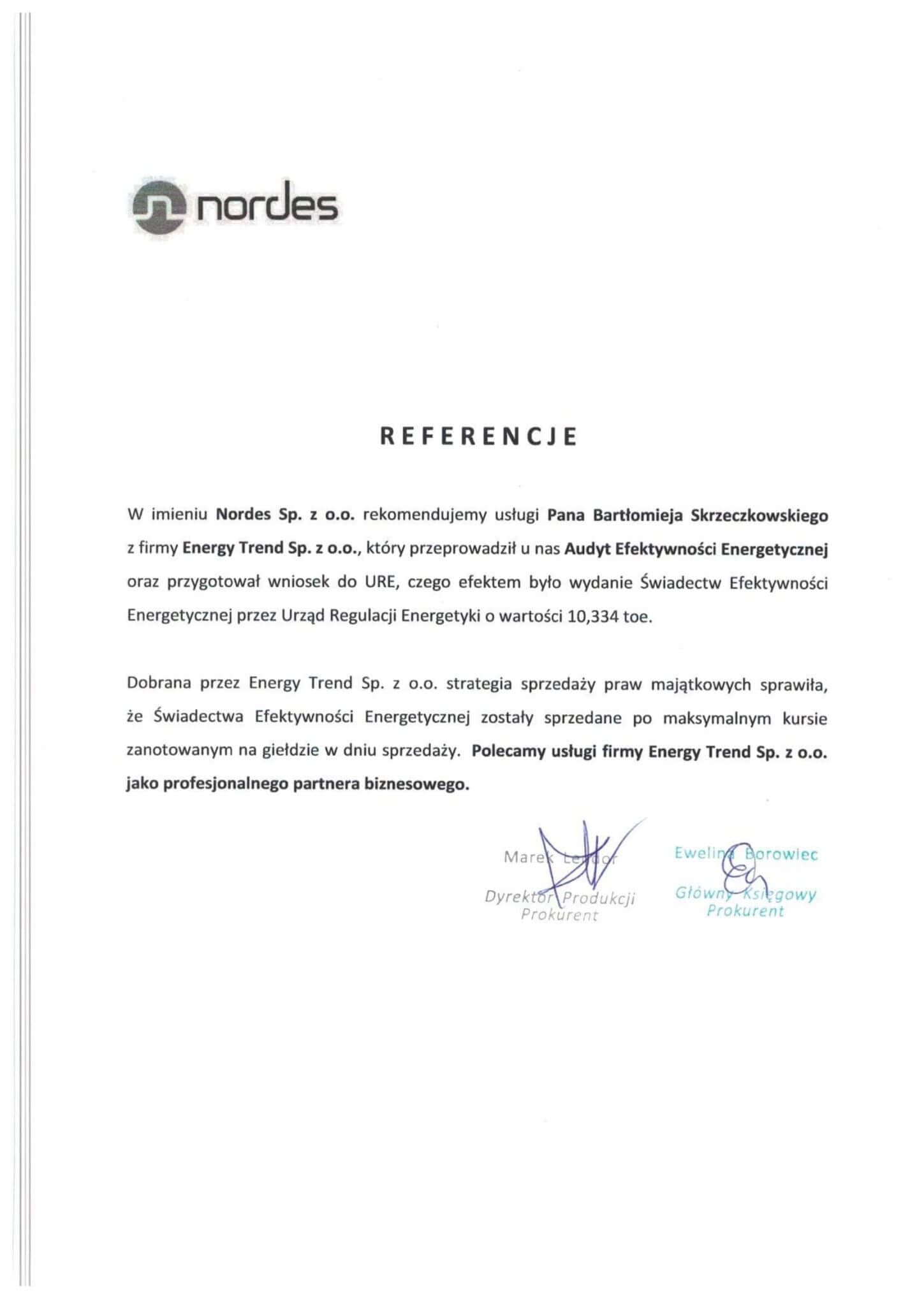Cogeneration for Industry and the Public Sector
Cogeneration and trigeneration with absorption chillers for ice water production.
Photovoltaics is not a panacea for all energy-related problems. Just look at the sunshine levels in different months and days to realize that photovoltaics alone are not enough. We also have no control over providing electricity during peak demand hours in a company.
A much more efficient way to cover electricity supply from photovoltaics, especially during the hours when the capacity charge is in effect, is to use a cogeneration unit (CHP – Combined Heat and Power).
Cogeneration systems produce heat and electricity in the most efficient way during a single technological process, known as cogeneration. Cogeneration involves the production of electricity and the utilization of waste heat from the electricity generation process.
These systems have broad applications as distributed energy sources in industrial facilities. Due to the heat recovery from exhaust gases, cogeneration is a process that enables more efficient utilization of consumed fuel, making it a technology that brings significant financial and environmental benefits.
Szklarnie stanowią doskonały przykład wykorzystania kogeneracji, ponieważ podczas procesu grzewczego mogą jednocześnie produkować energię elektryczną do oświetlenia lub zasilania systemów nawadniania.
In most cases, cogeneration can be used in the energy system. However, the technical possibility of applying cogeneration is not always synonymous with its profitability (financial efficiency). We conduct a financial efficiency analysis based on hourly electricity consumption in real-time during the entire baseline year.
For the correct selection of CHP (Combined Heat and Power), it is necessary to determine whether the company plans to install photovoltaic (PV) panels. If so, the expected profile of electricity production from PV needs to be determined. Initially, the optimal capacity of the PV installation should be selected, and only after that, an analysis of the energy system with CHP should be conducted.
In most installations involving a cogeneration unit, there is a challenge of utilizing excess heat during the summer months. Therefore, the focus is often on trigeneration (CCHP – Combined Cooling, Heating, and Power) rather than just cogeneration. Trigeneration involves the collaboration of a cogeneration unit with an absorption chiller that converts the excess heat from CHP into cooling in the form of chilled water.
A good example of trigeneration utilization is manufacturing companies where, in addition to heating systems in the production process, a cooling process is also used. With trigeneration, you can obtain heat for space heating, electrical energy for powering production processes or lighting, and cooling for refrigeration or office spaces during the summer months.

Poligeneration with waste heat recovery boilers for steam production
Poligeneration involves the production of four or more utilities in a single installation. These utilities typically include electricity, heat, cooling, and process steam. The main components of such a poligeneration system include a cogeneration module, which generates electricity and heat in the form of hot water, an absorption chiller, which converts heat from the cogeneration module into cooling, and a steam generator, which utilizes heat from exhaust gases to produce process steam with various parameters.
The electricity generated by a poligeneration system is primarily used for the internal needs of the company, and any surplus production is sold to the power utility company if needed.
During the production of electricity, heat is generated in the form of hot water, which can be used for central heating in winter. In the summer, this hot water can be converted into cooling using a water chiller unit. A steam generator or a waste heat boiler fueled by exhaust gases from the unit is used to produce process steam.
In polygeneration systems, compressed air can also be produced for various technological processes or other media that require electricity or heat for their generation.
In Energy Trend, we will provide advice and design the appropriate type of cogeneration precisely tailored to the operational characteristics of the enterprise.

The ORC system is used to generate electricity and heat from biomass and waste from the furniture industry.
For businesses with large quantities of wood waste, using a cogeneration installation based on an ORC system appears to be an excellent solution. In such cases, electrical and thermal energy are generated from post-production waste.
Cogeneration with an ORC system involves the simultaneous production of electrical and thermal energy while minimizing losses and transformations. The generated electrical energy is primarily used for the company’s own needs, and any excess can be sold to the power utility company.
The generated heat can be used for central heating purposes or other technological processes within the company.
The ORC technology operates similarly to traditional steam turbines: thermal energy is converted into mechanical energy and ultimately into electrical energy through an electric generator. Compared to traditional steam turbines that rely on water vapor as the working fluid, ORC technology uses an organic working fluid with a lower boiling point. Organic fluids replace water vapor and evaporate at relatively low temperatures. With the optimal choice of working fluid, ORC operation is safe and has minimal environmental impact, reduces the need for electricity-consuming pumps (it has a slower flow rate than water), and allows the conversion of waste heat into electrical energy in a stable and continuous manner throughout the production cycle.
We will provide advice and design the appropriate type of cogeneration precisely tailored to the operational characteristics of your company. We will also assess whether post-production waste can be used to implement an ORC system.
Benefits of Cogeneration
Cogeneration allows for increased efficiency in energy generation and is considered one of the most efficient forms of energy production. There are many benefits to installing such systems, such as significant cost savings for businesses, the potential to reduce electricity, heating, and cooling bills, and environmental friendliness as it does not emit harmful substances, including carbon dioxide. These systems reduce the carbon footprint of buildings and enhance the energy independence of businesses, often enabling them to operate off the grid and become less dependent on energy supply interruptions and price fluctuations.
Currently, relatively inexpensive piston engines are often used in cogeneration systems, providing high efficiency in electricity production across a wide range of power levels and allowing for quick startup and attainment of rated power. Another advantage of using cogeneration is the rapid return on investment, typically within 4-5 years, which can be further accelerated by accessing grants for energy efficiency. These grants are often funded by the European Union, the National Fund for Environmental Protection and Water Management, the National Development Fund, and local government funds.
We offer assistance in selecting the right equipment for your company’s profile and in finding the best financing options for your investment. Our experts are here to answer all your questions. Feel free to get in touch with us.
Selected Clients:

Contact us
If you are interested in our services, please contact us. During a free consultation, we will identify areas where we can assist you and present our solutions. We are available to assist you from Monday to Friday between 8:00 AM and 5:00 PM.
Call us
Write to us











